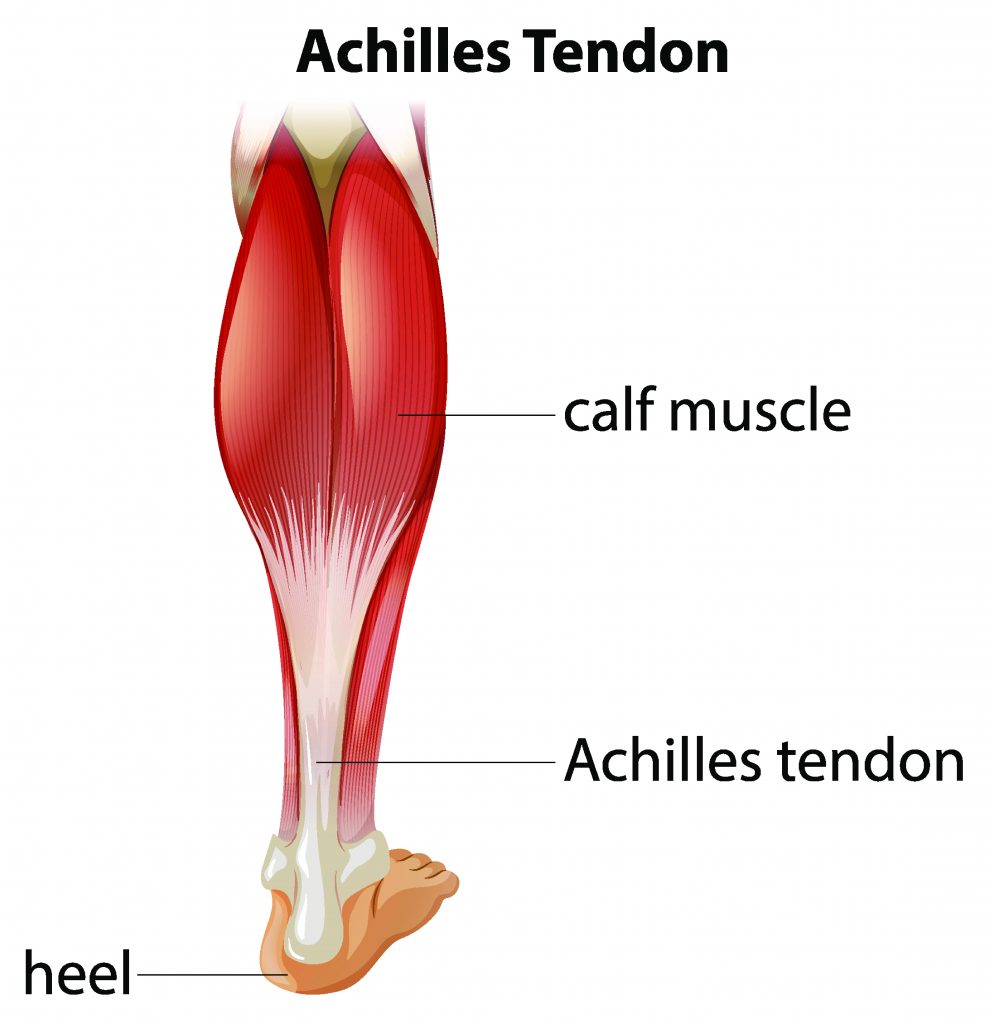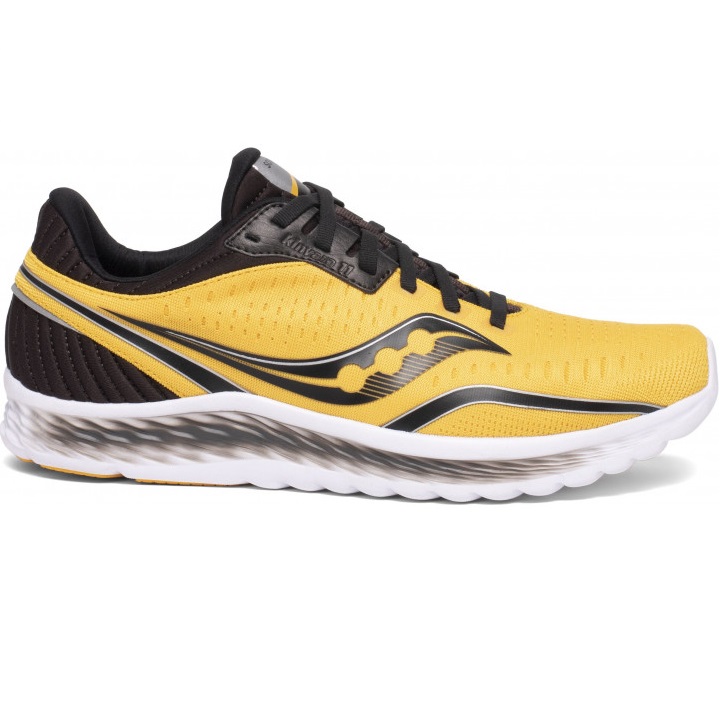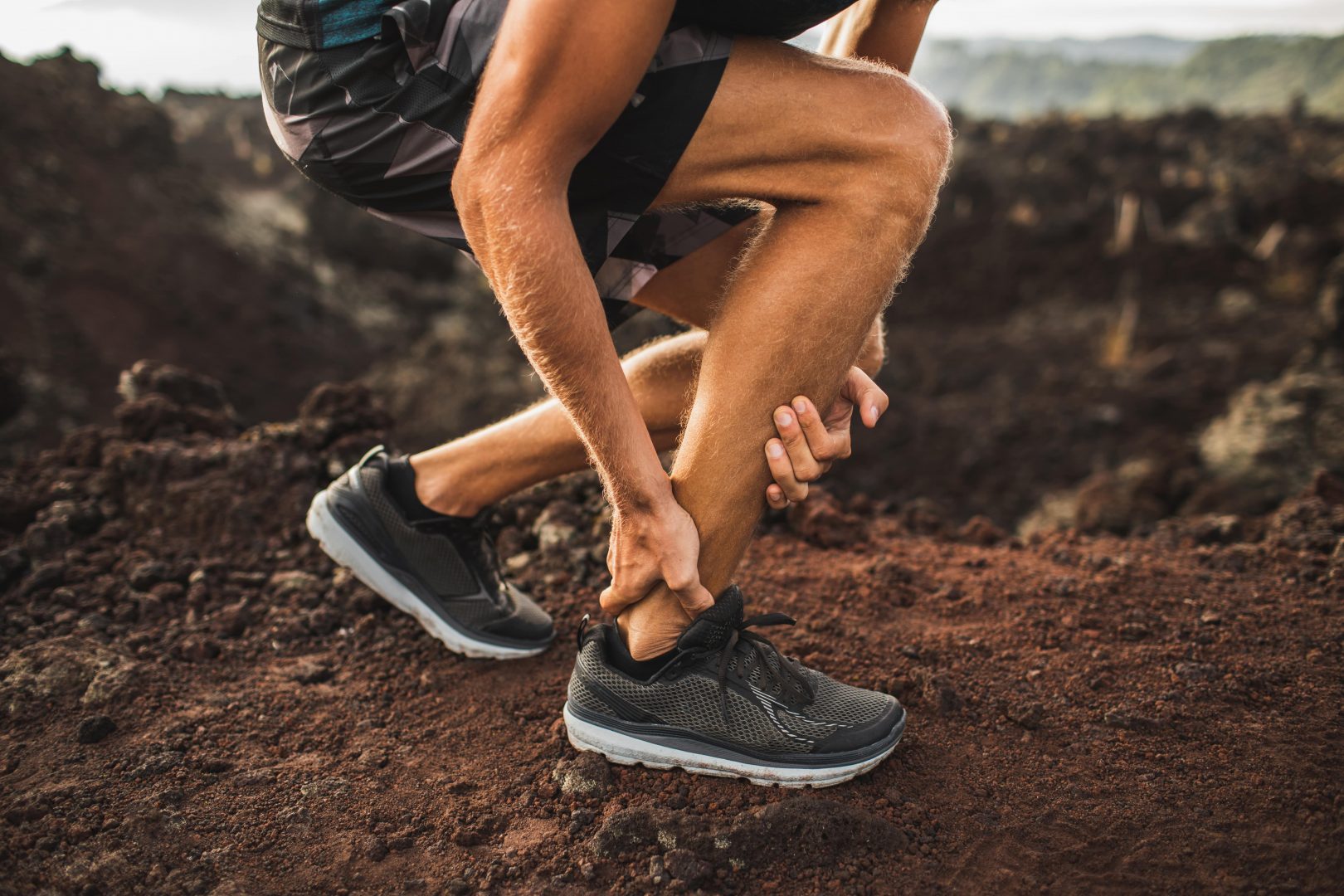If you’re a runner experiencing pain in your lower leg or heel, you might be developing a serious injury called achilles tendonitis which could put you out of action for months.
Before you lace up for your next run, take a breath and read this article. We’ve gathered all the information you need to understand the symptoms of this common tendon injury, how to treat it, and even prevent it reoccurring.
Note: If you are experiencing severe or ongoing pain, it’s important to also consult your doctor or physiotherapist for professional treatment.
What is the achilles tendon?
The achilles tendon is the largest tendon in your body. It connects your calf muscle to your heel bone and powers everything from walking and standing on your tip-toes to running and jumping.

The achilles is absolutely critical in the biomechanics of running. When you push off the ground with your toes, your achilles tendon transfers almost 100% of that generated force—as much as triple your body weight—through your calf muscle and beyond to drive your body forward.
What is achilles tendonitis?
Achilles tendonitis (also referred to as achilles tendinitis, achilles tendinosis, or achilles tendinopathy) is simply inflammation of the achilles tendon. It’s a common condition that can take months to recover from, and can even require surgery in severe cases.
Common symptoms
Achilles tendonitis is characterised by aching, soreness, and stiffness in the calf muscle or along the back of your heel. Pain often occurs first thing in the morning and tends to worsen throughout the day as you move around. It can be particularly painful during and after physical activity—especially those which rely on the achilles, such as running and walking.
The pain may become so severe that it limits you from performing certain activities altogether. If this happens, consult your doctor immediately so they can recommend an appropriate treatment plan based on a professional diagnosis.
Common causes
Achilles tendonitis typically results from repetitive stress to the tendon as opposed to a single acute injury. This can be caused by a number of contributing factors, including:
- Tight or fatigued calf muscles transfer too much of the burden of running back to the achilles tendon. This can be brought on by not stretching properly before exercise.
- Over-pronation is when your feet rotate too far inward on impact. This makes you far more likely to develop achilles tendonitis. Some level of pronation isn’t abnormal in itself, however when it’s excessive and causes pain, you should seek treatment.
- Increasing your mileage too quickly can create excessive stress on your achilles tendon and lead to tendonitis. Similarly, excessive hill running or high-impact training can also contribute.
- Poor running footwear can force an unnatural position and place extra strain on your achilles tendon.
- Not listening to your body when it’s trying to tell you to rest; such as pushing through pain instead of stopping to rest and assess what might need to change.
How to treat achilles tendonitis & how long does an achilles injury take to heal?
Achilles tendonitis is common, but it’s important to treat it immediately to prevent further injury. Even with early treatment, the pain may last longer than 3 months, so resist the urge to hit the road again before you’re ready. Here are several methods how to treat an achilles injury you can try at home to relieve the pain, encourage healing, and prevent worsening of your injury.
- Rest – Simply one of the best ways to reduce pain from achilles tendonitis, and a surefire way to avoid prolonging your recovery.
- Ice therapy – To reduce inflammation and swelling in your achilles tendon, apply ice to the most painful area for 20 minutes at a time (as long as your skin doesn’t become numb).
- Anti-inflammatory medication – Over the counter anti-inflammatories such as ibuprofen can also help reduce swelling in your achilles and provide temporary pain relief.
- Calf stretches and foam roller – Many people ask how to stretch achilles. Focus on your calf muscles, go slow, and avoid aggravating the actual inflamed tendon.
- Physical therapy – If you are experiencing particularly intense or ongoing pain, your doctor may offer physical therapy treatments.
- Surgery – Severe cases of achilles tendonitis may require surgical treatment.
How to avoid achilles tendonitisÂ
Remember – the faster and farther you run, the more strain you put on your achilles tendon. To avoid achilles tendonitis or to prevent it reoccurring if you’ve developed it before:
- Warm up with running stretches before every workout and a cool down afterwards, paying extra attention to your calf muscles. Read more about the best stretches for runners here.Â
- Wear supportive running shoes that fit well and have good arch support, especially while running. Don’t use shoes that have been stored away for a long time or are no longer in good condition.

- Allow enough recovery time between runs. It’s important to allow your body to properly rest so it can repair itself from the stress of training or racing.
- Strengthen your calf muscles. You can use a resistance band or weights, or simply do exercises like calf raises or heel raises. Be sure to increase gradually to avoid inadvertent injury here. Read more about strength training for runners here.Â
Conclusion
Although achilles tendonitis is a common and debilitating injury for runners, there are plenty of options for treatment at home, including lots of rest, plus applying ice, stretching, and taking anti-inflammatory medication.
You can even reduce your risk of developing achilles tendonitis by strengthening your calf muscles and stretching often, being sensible when increasing your training, and keeping your footwear in good shape.
Are your running shoes due for an upgrade? Don’t put it off! Show your achilles some love and step into Pure Running; the one-stop online running store with everything you need.









